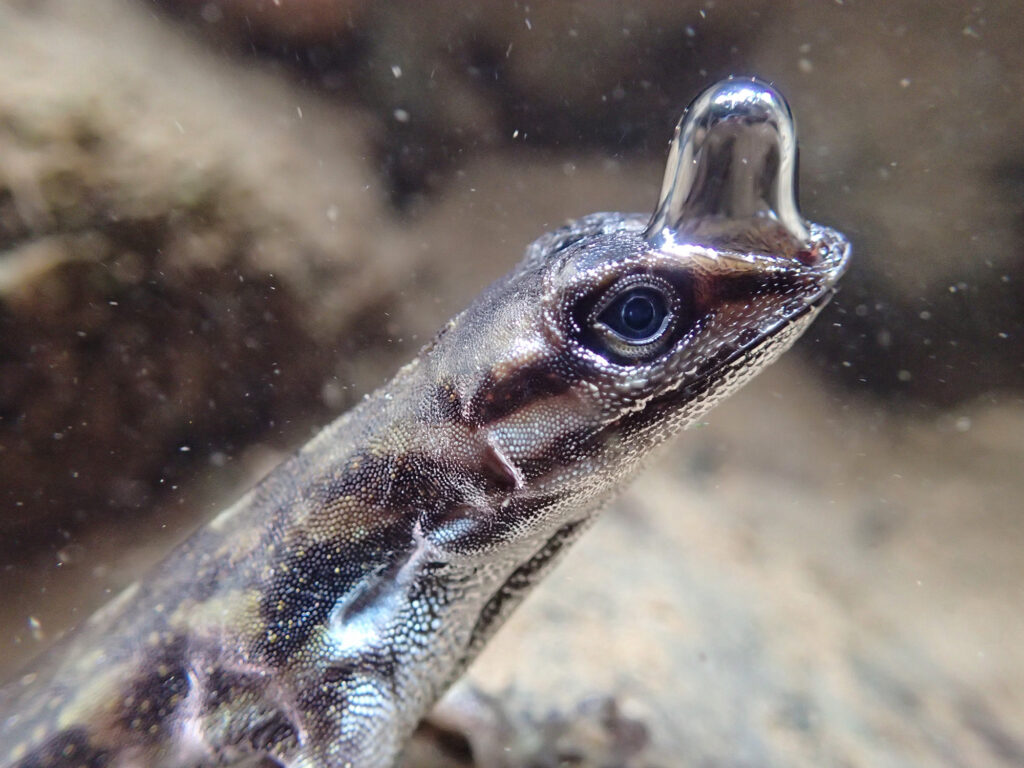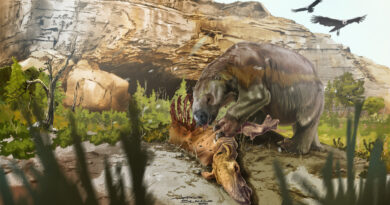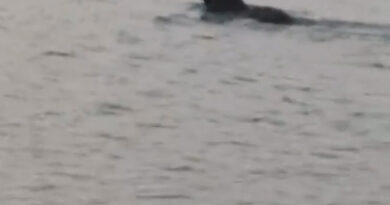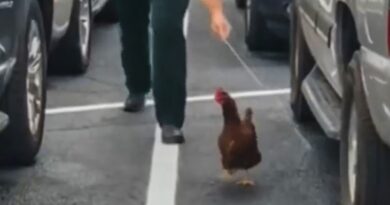Scuba Diving Lizzard Uses Bubble Of Air On Its Nose To Breath Underwater When Hiding From Predators
Researchers have found that some lizards use bubbles attached to their noses as ‘oxygen tanks’ allowing them to spend over a quarter of an hour underwater hiding from predators.
In a publication by Binghamton University, in New York in the USA, researchers found that some Anoles Lizards have adapted to evade predators by using a bubble attached to their snouts to recycle oxygen, allowing them to spend up to 16 minutes under the water.
There are some 425 different Anolis lizards that generally inhabit tropical forests and live near water sources such as small ponds and streams.

Lindsey Swierk, assistant research professor of biological sciences at Binghamton University, said in a statement obtained by Real Press: “It’s easy to imagine the advantage that these small, slow anoles gain by hiding from their predators underwater – they’re really hard to spot!”
Swierk had observed the lizards in the rainforests of Costa Rica in 2019 and was left asking herself how they were able to spend such long periods of time beneath the surface of the water.
To answer the question the researchers conducted experiments on several different species of semi-aquatic anoles.
The researchers said in the publication that followed that the semi-aquatic anoles are able to breathe underwater by “rebreathing” exhaled air that gets trapped between their skin and the surrounding water -which is why a bubble forms on their snout.
Chris Boccia, the lead author of the paper, added to the statement saying: “We found that semi-aquatic anoles exhale air into a bubble that clings to their skin,”

He went on: “The lizards then re-inhale the air, a manoeuvre we’ve termed ‘rebreathing’ after the scuba-diving technology.”
The team used a tiny sensor placed inside the air bubbles to measures if the lizards were inhaling oxygen from the bubble. They found that just like a scuba tank the oxygen levels in the bubbles slowly decreased over time.
Luke Mahler, an assistant professor in EEB at the University of Toronto reacted to the findings saying: “Rebreathing had never been considered as a potential natural mechanism for underwater respiration invertebrates,”
Swierk said: “The finding that different species of semi-aquatic anoles have evolutionarily converged to extract oxygen from their rebreathed air bubbles leads to other exciting questions,”
Swierk concluded saying: “Anoles are a remarkable group of lizards, and the number of ways that this taxon has diversified to take advantage of their environments is mind-boggling,”
The research team is planning on carrying out more investigations into the scuba-diving Anoles lizards in the future.



